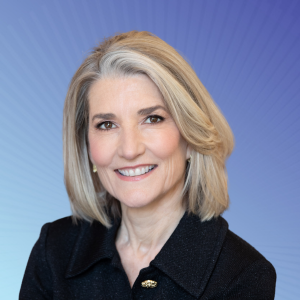29 August 2017
Retirees on modest budgets doing it tough
Biggest increases in costs for retirees in Sydney and Canberra, Adelaide and Hobart
Australians living on modest budgets, those living close to or at pension level, are suffering the greatest cost imposts in retirement, according to new figures.
The Association of Superannuation Funds (ASFA) today released the June quarter Retirement Standard (RS) update, with new budgets for comfortable and modest living.
The comfortable standard budget affords a much more dignified existence for Australian retirees. The modest budget has much to be modest about and is at near pension level subsistence.
The ASFA Retirement Standard June quarter figures show couples aged around 65 living a comfortable retirement need to spend $60,063 per year and singles $43,695, up 0.2 per cent on the previous quarter.
At the modest level, singles need to spend $24,270 and couples $34,911, up 0.1 per cent on the previous quarter.
Total budgets for older retirees (those aged 85 and over) increased by around 0.5 per cent compared to the previous quarter at both the comfortable and modest levels.
The annual increase in living costs at the modest level was in each case higher than at the comfortable level, reflecting the greater relative importance of electricity, health care and council and water rates in the modest budgets.
The annual increase was 1.5 per cent for comfortable and 2.1 per cent for modest. These compare to 1.9 per cent for the general Consumer Price Index (CPI).
“The cost of retirement over the most recent quarter only increased by a relatively small amount and that is welcome news but many retirees are still finding it difficult to achieve a comfortable standard of living in retirement,” ASFA CEO Dr Martin Fahy warned.
“Far too many people are living without enough super, especially women. The pension is not enough.
“In particular, retirees with health care needs are facing significant increases in costs.
“The costs of electricity and gas and of council and water rates are a serious concern for many.”
Australian retirees living at the very basic level are doing it tough meeting costs of living and need help. Financial support and literacy are part of the solution and super funds across the country can help their members sort out their retirement living planning. ASFA says consumers should contact their fund to get help.
“We need people to be retirement ready by saving for the sort of life they want to live and getting their super sorted. The magic of compound interest and tax savings in super can help lift living experiences in later life. Retirees now and in the future need super to increase and be safeguarded. People need to be super skilled to be free from major financial worries.”
ASFA also examined living costs for retirees by capital city.
Cost increases for retirees were highest in Sydney, Adelaide, Hobart and Canberra.
Darwin, Perth and Brisbane had the lowest average overall price increases.
Table 1: Annual increase in retiree living costs by capital city
| Comfortable | Modest | |
|---|---|---|
| Sydney | 1.8 | 2.5 |
| Melbourne | 1.6 | 2.2 |
| Brisbane | 1.0 | 1.3 |
| Adelaide | 1.9 | 2.5 |
| Perth | 0.9 | 1.2 |
| Hobart | 2.1 | 2.3 |
| Darwin | 0.4 | 0.8 |
| Canberra | 2.1 | 2.4 |
In Sydney, a 3.8 per cent increase in food costs, a 12.5 per cent increase in electricity costs and a 5.1 per cent increase in health costs were behind higher than average increases in the retirement budgets.
There was no increase in the price of electricity in Darwin (albeit off a relatively high price base for electricity in that capital) and only small price rises or price falls in most of the other expenditure categories.
General info on the updated RS for the June quarter:
While seasonal fruit and domestic holidays were more affordable, critical costs of power, health care and rates and water bills continue to be a big cost issue for many retirees.
Over the year to the June quarter there was a 1.5 per cent increase in the ASFA RS budgets, slightly lower than the 1.9 per cent increase in the All Groups Consumer Price Index (CPI).
The most significant price increases in the June quarter contributing to increases in annual budgets for retirees were for medical and hospital services (4.1 per cent) reflecting the annual increase in private health insurance premiums on 1 April.
The most significant offsetting price falls were for domestic holiday travel and accommodation (-3.2 per cent), automotive fuel (-2.5 per cent) and fruit (-4.4 per cent).
Fluctuations in world oil prices continue to influence domestic fuel prices. During the June quarter, automotive fuel prices fell in April (-0.8 per cent), rose in May (+0.2 per cent) and fell in June (-0.6 per cent).
Overall, food prices fell 0.2 per cent in the March quarter. Price rises in fruits and vegetables resulting from crop damage due to Cyclone Debbie were observed for tomatoes, beans, cucumbers, melons, berries and bananas.
However, these rises were offset by falls in seasonally available fruits such as oranges, mandarins and apples.
The main contributor to the fall in the recreation and culture group this quarter is domestic holiday travel and accommodation (-3.2 per cent). The fall in domestic holiday travel and accommodation is typical of the off peak season for domestic holiday travel.
Clothing and footwear prices fell 0.3 per cent in the quarter, as a result of sustained periods of specials.
Table 2: Budgets for various households and living standards for those aged around 65 (June quarter 2017, national)
| Modest lifestyle – single |
Modest lifestyle – couple |
Comfortable lifestyle – single | Comfortable lifestyle – couple | |
|---|---|---|---|---|
| Housing – ongoing only | $76.47 | $73.41 | $88.63 | $102.75 |
| Energy | $43.99 | $58.43 | $44.64 | $60.55 |
| Food | $78.54 | $162.68 | $112.20 | $201.95 |
| Clothing | $17.31 | $28.10 | $37.47 | $56.20 |
| Household goods and services | $27.25 | $36.95 | $76.65 | $89.80 |
| Health | $46.05 | $84.87 | $91.35 | $161.23 |
| Transport | $93.18 | $95.82 | $138.85 | $141.49 |
| Leisure | $74.51 | $111.00 | $225.79 | $309.42 |
| Communications | $8.15 | $14.27 | $22.41 | $28.52 |
| Total per week | $465.44 | $669.53 | $837.99 | $1,151.90 |
| Total per year | $24,270 | $34,911 | $43,695 | $60,063 |
The figures in each case assume that the retiree/s own their own home and relate to expenditure by the household. This can be greater than household income after income tax where there is a drawdown on capital over the period of retirement. Single calculations are based on female figures. All calculations are weekly, unless otherwise stated.
Table 3: Budgets for various households and living standards for those aged around 85 (June quarter 2017, national)
| Modest lifestyle – single |
Modest lifestyle – couple |
Comfortable lifestyle – single | Comfortable lifestyle – couple | |
|---|---|---|---|---|
| Housing – ongoing only | $76.47 | $73.41 | $88.63 | $102.75 |
| Energy | $43.99 | $58.43 | $44.64 | $60.55 |
| Food | $78.54 | $162.68 | $112.20 | $201.95 |
| Clothing | $17.31 | $28.10 | $37.47 | $56.20 |
| Household goods and services | $47.84 | $67.82 | $148.72 | $172.14 |
| Health | $99.46 | $154.40 | $136.20 | $217.29 |
| Transport | $38.76 | $48.45 | $43.61 | $53.30 |
| Leisure | $47.47 | $70.82 | $122.70 | $169.60 |
| Communications | $8.10 | $14.19 | $22.27 | $28.35 |
| Total per week | $457.94 | $678.31 | $756.45 | $1,062.13 |
| Total per year | $23,878 | $35,369 | $39,443 | $55,382 |
The figures in each case assume that the retiree/s own their own home and relate to expenditure by the household. This can be greater than household income after income tax where there is a drawdown on capital over the period of retirement. Single calculations are based on female figures. All calculations are weekly, unless otherwise stated.
More information
Costs and summary figures can be accessed via the ASFA website. The ASFA Retirement Standard Calculator can be used to obtain a breakdown of the Retirement Standard budgets for each state. Australians can find out more about superannuation on the independent Super Guru website.
For further information, please contact:
Teresa Mullan, Media Manager, 0451 949 300.
About ASFA
ASFA is the peak policy, research and advocacy body for Australia’s superannuation industry. It is a not-for-profit, sector-neutral and non-party political, national organisation. ASFA’s mission is to continuously improve the superannuation system so people can live in retirement with increasing prosperity. We focus on the issues that affect the entire superannuation system and represent more than 90 per cent of the 14.8 million Australians with superannuation.





